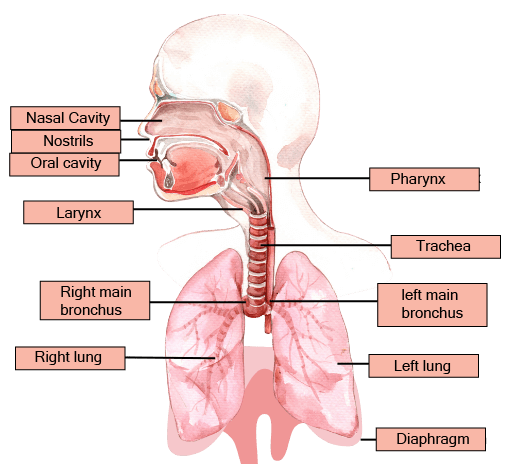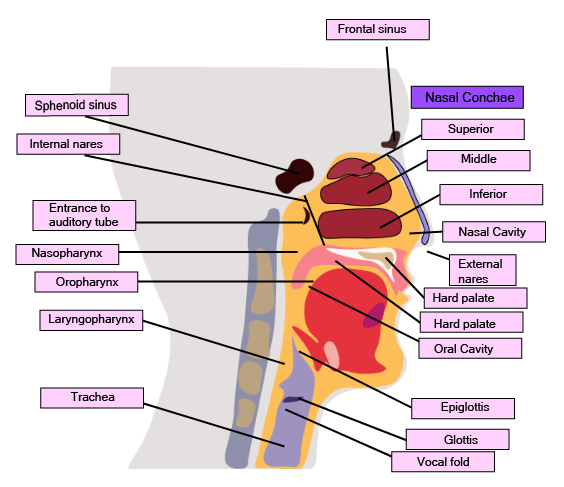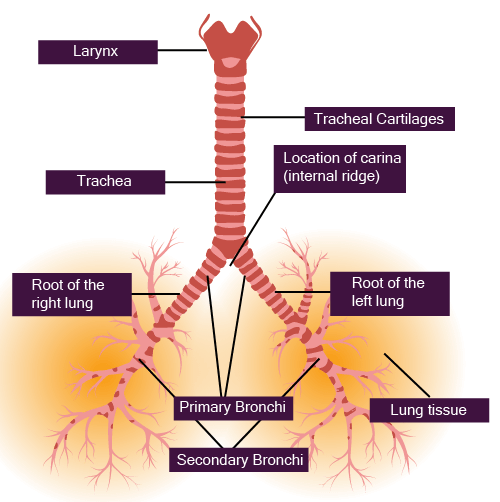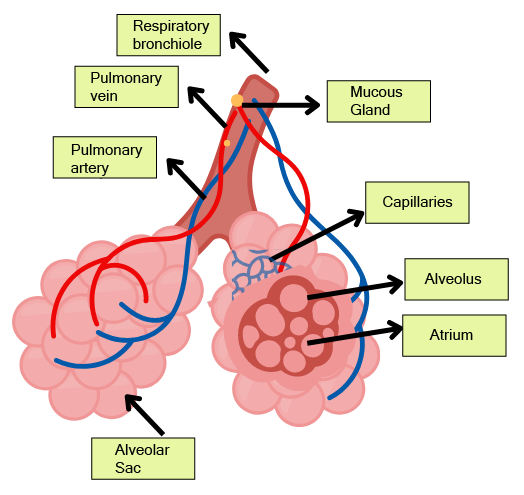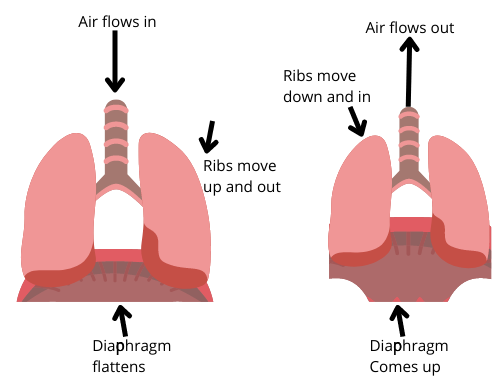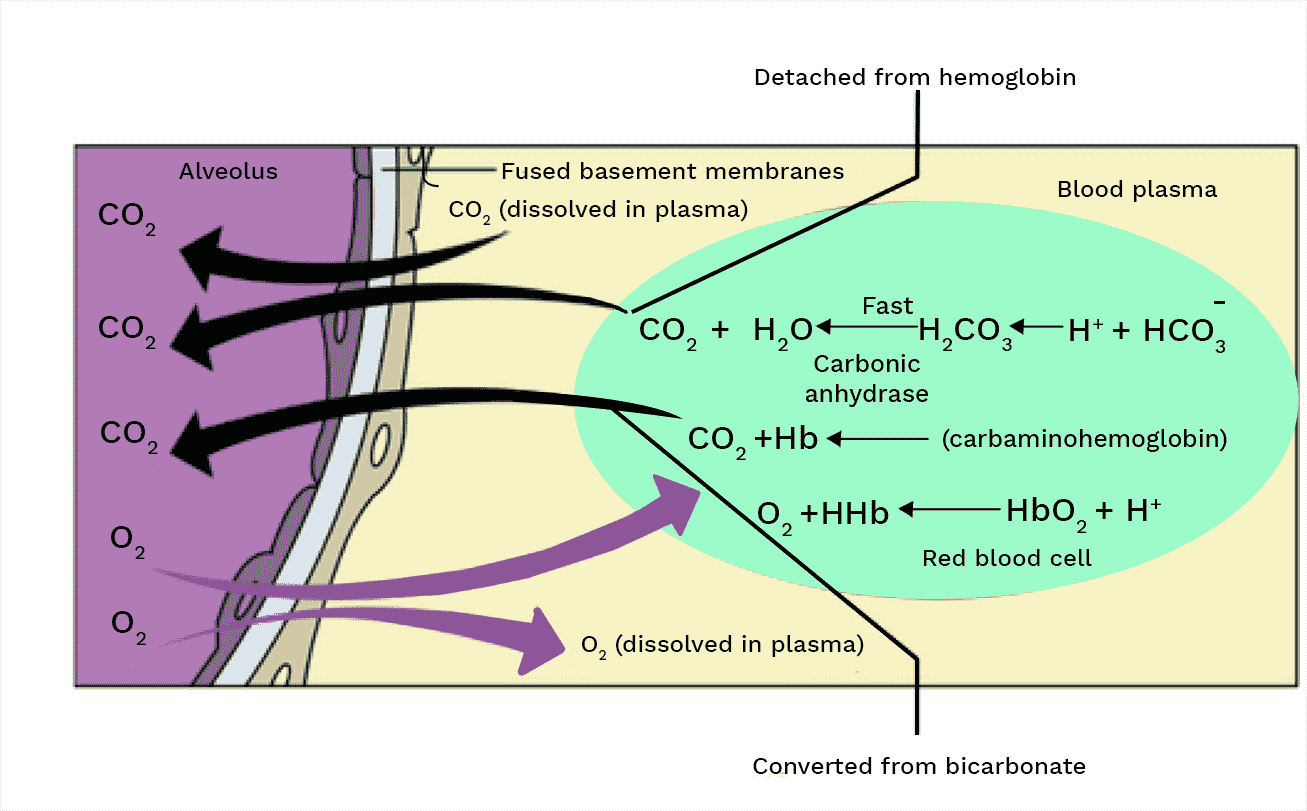Biology Class 11 Chapter 14 Breathing and Exchange of Gases Notes: FREE PDF Download
FAQs on Breathing and Exchange of Gases Class 11 Notes: CBSE Biology Chapter 14
1. What are the Steps of Respiration?
Breathing or pulmonary ventilation by which oxygen from the atmospheric air is drawn inside and carbon dioxide rich in alveolar air is released out.
Diffusion of both oxygen and carbon dioxide across the alveolar membrane.
Gases are transported throughout the body cells by blood.
Diffusion of oxygen and carbon dioxide between blood and tissues of the body.
The cells utilise the oxygen for catabolic reactions which results in the release of carbon dioxide.
2. Where does the Exchange of Gases Take Place?
The exchange of gases takes place in the alveoli. The exchange of the gases happens due to a simple diffusion process.
3. Define Vital Capacity? What is its Significance?
The maximum amount of air a man breathes in after a forced expiration is called vital capacity. Vital capacity is higher for athletes and singers. Vital capacity shows the strength of our inspiration and expiration.
4. State the Volume of Air Remaining in the Lungs After Normal Breathing.
The volume of air remaining in the lungs even after a forcible expiration averages 100ml to 1200ml.
5. What is Breathing and Exchange of Gases Class 11 Biology Chapter 14?
For numerous actions, we require energy. Catabolism of numerous dietary components, such as proteins, carbs, lipids, and so on, produces this energy. Catabolic reactions necessitate the use of oxygen, which results in the production of carbon dioxide. As a result, the body requires a constant exchange of gases, with oxygen from the environment being taken in and carbon dioxide being expelled. Breathing or respiration refers to the process of gaseous exchange. A detailed explanation of Chapter 14 Biology Class 11 is available on the Vedantu website and the revision notes are also available FREE of cost.
6. What is breathing?
Breathing is taking in the oxygen in the lungs and exhaling carbon dioxide. Respiration is a procedure in which energy-rich molecules are broken down to create energy for the organism's survival. Depending on the environment and level of organisation, various species have different respiratory organs. Humans, like other higher animals, have lungs for breathing. Earthworms have wet skin that helps them breathe. Inspiration or inhalation is the process in which the air is taken in.
7. What is alveolar air Class 11?
Bronchioles end in tiny air sacs called alveoli, which is where oxygen and carbon dioxide is exchanged. The bronchial tree is a network of bronchioles, alveoli, and bronchi. The lungs and atmospheric air exchange oxygen and carbon dioxide continuously. Each person's lungs contain hundreds of millions of alveoli. Oxygen is absorbed into the alveoli from the environment owing to the lower oxygen content in the alveoli, and carbon dioxide is expelled due to increasing carbon dioxide buildup in the lungs. A detailed explanation of Chapter 14 of Biology Class 11 is available on Vedantu.
8. What comprises the lungs?
Lungs are made up of a network of bronchi, bronchioles, and alveoli that branch out. The human body has two lungs, each of which is covered by a double-layered pleura with pleural fluid between them. The pleura's outer membrane is in close touch with the thoracic lining, whereas the pleura's inner membrane is linked to the lung surface. A thoracic chamber, which is anatomically an airtight chamber, contains the lungs. For study material related to Biology Class 11 Chapter 14, students can visit the Vedantu app Website.
9. How does the blood become deoxygenated?
Based on partial pressure, the blood releases oxygen into the bodily tissues. Each gas adds to the total pressure in its own way. The flow of gas from one location to another is determined by the partial pressure difference. Because the partial pressure of oxygen in alveoli is higher than in body tissues, oxygen is delivered in a gradient to the body tissues. The partial oxygen saturation in the tissues is low. The blood becomes deoxygenated as a result.























